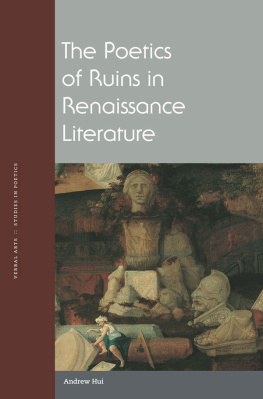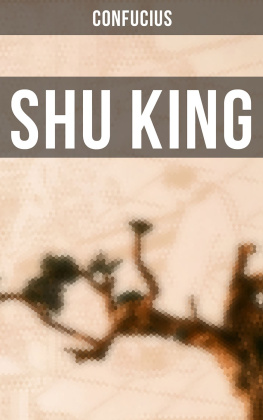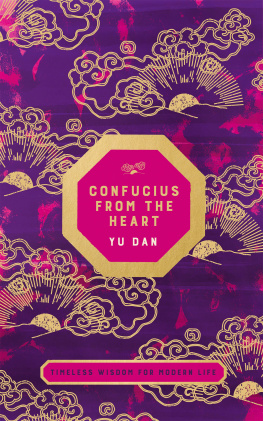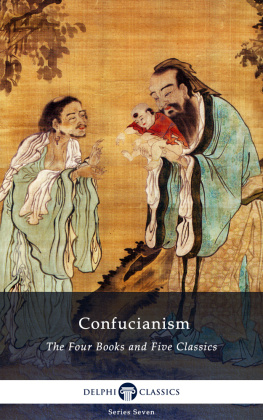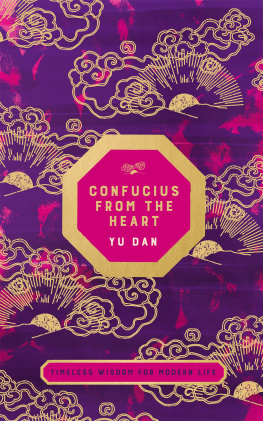Hui - A theory of the aphorism: from Confucius to Twitter
Here you can read online Hui - A theory of the aphorism: from Confucius to Twitter full text of the book (entire story) in english for free. Download pdf and epub, get meaning, cover and reviews about this ebook. City: Oxford;Princeton, year: 2019, publisher: New Jersey, Princeton university press, genre: Religion. Description of the work, (preface) as well as reviews are available. Best literature library LitArk.com created for fans of good reading and offers a wide selection of genres:
Romance novel
Science fiction
Adventure
Detective
Science
History
Home and family
Prose
Art
Politics
Computer
Non-fiction
Religion
Business
Children
Humor
Choose a favorite category and find really read worthwhile books. Enjoy immersion in the world of imagination, feel the emotions of the characters or learn something new for yourself, make an fascinating discovery.

A theory of the aphorism: from Confucius to Twitter: summary, description and annotation
We offer to read an annotation, description, summary or preface (depends on what the author of the book "A theory of the aphorism: from Confucius to Twitter" wrote himself). If you haven't found the necessary information about the book — write in the comments, we will try to find it.
Hui: author's other books
Who wrote A theory of the aphorism: from Confucius to Twitter? Find out the surname, the name of the author of the book and a list of all author's works by series.
A theory of the aphorism: from Confucius to Twitter — read online for free the complete book (whole text) full work
Below is the text of the book, divided by pages. System saving the place of the last page read, allows you to conveniently read the book "A theory of the aphorism: from Confucius to Twitter" online for free, without having to search again every time where you left off. Put a bookmark, and you can go to the page where you finished reading at any time.
Font size:
Interval:
Bookmark:
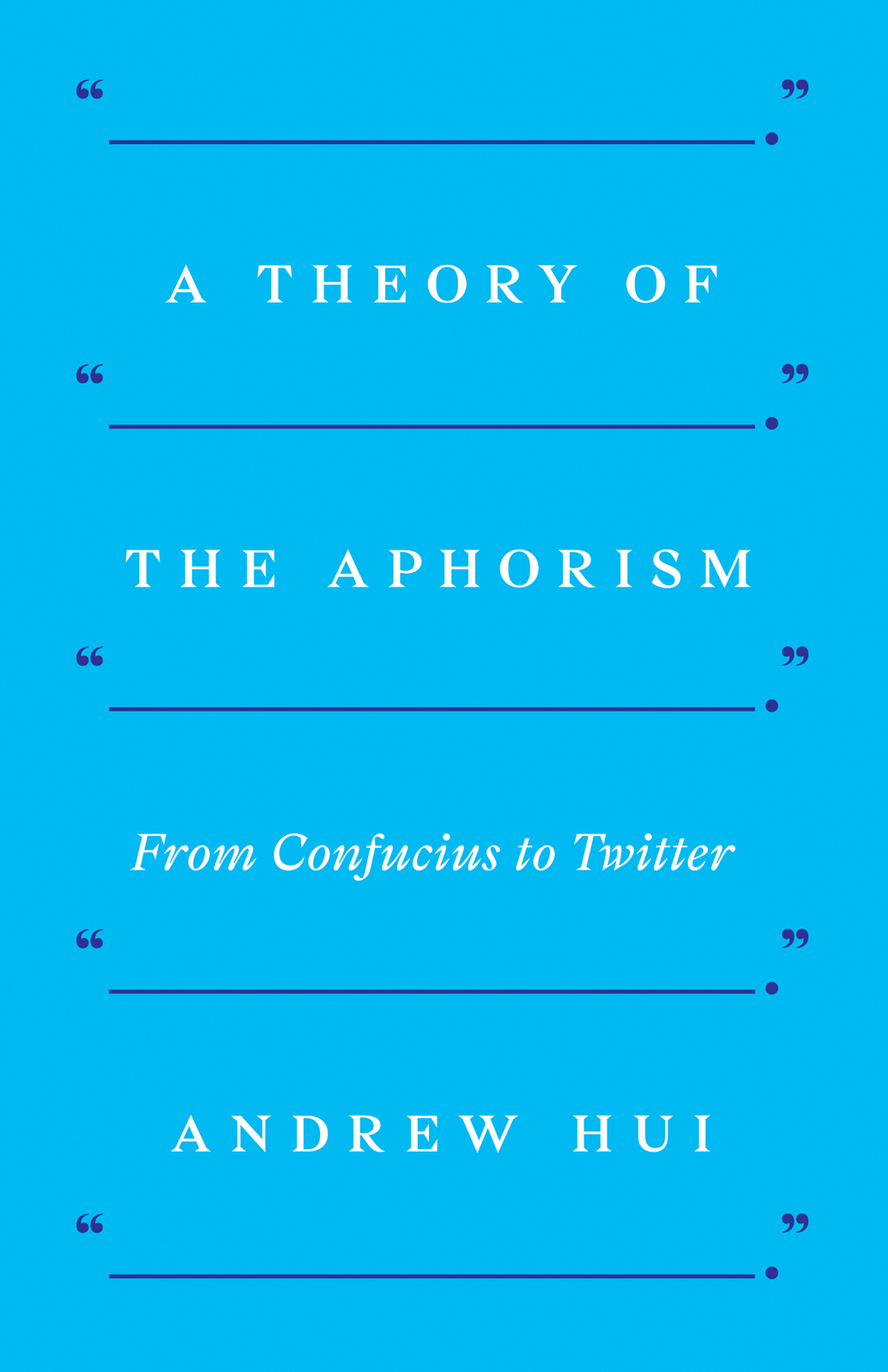
the Aphorism
to Twitter
PRINCETON UNIVERSITY PRESS
PRINCETON AND OXFORD
Copyright 2019 by Princeton University Press
Published by Princeton University Press
41 William Street, Princeton, New Jersey 08540
6 Oxford Street, Woodstock, Oxfordshire OX20 1TR
press.princeton.edu
All Rights Reserved
Library of Congress Control Number: 2018950885
ISBN: 978-0-691-18895-9
eISBN 978-0-691-1905-5-6 (ebook)
Version 1.0
British Library Cataloging-in-Publication Data is available
Editorial: Anne Savarese and Thalia Leaf
Production Editorial: Ellen Foos
Jacket Design: Chris Ferrante
Production: Erin Suydam
Publicity: Jodi Price
Copyeditor: Daniel Simon
To Julia, our little book of aphorisms
This is a short book on the shortest of genresthe aphorism. As a basic unit of intelligible thought, this microform has persisted across world cultures and histories, from Confucius to Twitter, Heraclitus to Nietzsche, the Buddha to Jesus. Opposed to the babble of the foolish, the redundancy of bureaucrats, the silence of mystics, in the aphorism nothing is superfluous, every word bears weight.
Its minimal size is charged with maximal intensity. Consider Heraclitus Nature loves to hide; Jesus The kingdom of God is within you; Pascals The eternal silence of these infinite spaces terrifies me; or Nietzsches If a temple is to be erected, a temple must be destroyed. These aphorisms have an atomic qualitycompact yet explosive. Yet in comparison to the rich theories and thick histories of the novel, lyric, or drama, the aphorismthis most elemental of literary formshas been curiously understudied, a vast network of literary and philosophical archipelagos that has so far been thinly explored. At a time when a presidency can be won and social revolutions ignited by 140character posts (now 280), an analysis of the short saying seems to be as crucial as ever.
This books focus, however, will not be on the political rhetoric of the aphorism (though I will touch upon it in the epilogue). It will rather take a step back from the noise of digital minutiae and explore the deep life of the aphorism as a literary form.
The theory this book advances is that aphorisms are before, against, and after philosophy. Heraclitus comes before and against Plato and Aristotle, Pascal after and against Descartes, Nietzsche after and against Kant and Hegel. The philosopher creates and critiques continuous lines of argument. The aphorist, on the other hand, composes scattered lines of intuition. One moves in a chain of discursive logic; the other by arrhythmic leaps and bounds. Much of the history of Western philosophy can be narrated as a series of attempts at the construction of systems. My theory proposes that much of the history of aphorisms can be narrated as an animadversion, a turning away from grand systems through the construction of literary fragments. I will shortly offer definitions of the aphorism, the fragment, and the system, but for now, let us heed the German Romantic philosopher Friedrich Schlegels elegant formulation: A fragment ought to be entirely isolated from the surrounding world like a little work of art and complete in itself like a hedgehog (Athenaeum Fragments 206).
As aphorisms have been for millennia anthologized and de- anthologized, revived and mutilated, quoted and misquoted, they constitute their own cultural network. As such, a philological understanding of aphorisms is as necessary as a philosophical one: that is to say, one must examine not only their internal meaning but also the circumstances of their material production, transmission, and reception in history. It is no accident that when Schlegel compares an aphorism to a hedgehog (ein Igel ), the most famous hedgehog in Western thought comes from nowhere else but that fragment of Archilochus: The fox knows many things, but the hedgehog knows one big thing (fr 201 West). In Schlegels Germany, the poetic production of modern fragments went hand-in-hand with the scholarly editions of ancient fragments. As we shall see, the aphorisms of the ancients are some of the most problematicbut also the most generativespecimens in the laboratory of textual criticism.
Though an aphorism by definition is succinct, it almost always proliferates into an innumerable series of iterations. By nature the aphorismlike the hedgehogis a solitary animal. Striving to cut out all verbiage, its not-so-secret wish is to annihilate its neighbor so that its singular potency would reign supreme. Yet aphorisms also have a herd mentality. Indeed, from the wisdom literature of the Sumerians and Egyptians onward, they find strength in the social collective of anthologies. Each aphorism might very well be complete in itself, as Schlegel claims, but it also forms a node in a network, often a transnational one with great longevity, capable of continuous expansion. And the best modern aphorists never wrote just one aphorism but almost always a great manyLa Rochefoucauld, Goethe, and Lichtenberg had notebooks upon notebooks filled with them and often had trouble finishing them. So I find it ironic that although a single aphorism may be a hegemonic hedgehog, a collection of aphorisms tends to morph into a multitude of cunning little foxes.
At the same time, the very minimal syntax of an aphorism gives it a maximal semantic force. The best aphorisms admit an infinitude of interpretation, a hermeneutic inexhaustibility. In other words, while an aphorism is circumscribed by the minimal requirements of language, its interpretation demands a maximal engagement. Deciphering the gnomic remarks of the early Greek thinkers, Jesus, or Confucius marks the birth of hermeneutics. For Friedrich Schleiermacher, a friend of Schlegel and a founder of modern hermeneutics, interpretation is an infinite task, because there is an infinity of past and future that we wish to see in the moment of the utterance (Hermeneutics and Criticism, 23). The interpretation of one aphorism thereby opens a plurality of worlds. This is what I mean when I say that an aphorism is atomic: it is without parts, but its splitting causes an explosion of meaning. The hedgehog must be dissected.
These three methodologies, thenthe philosophical, the philological, the hermeneuticalwill be the intersecting vectors that guide this book. Taken together, my theory reveals that the aphorism is at times an ancestor, at times an ally, and at times an antagonist to systematic philosophy.
Now let us try to define the aphorism. Turn to any reference work and it would read something like a concise expression of doctrine or principle or any generally accepted truth (here, the Encyclopaedia Britannica). This formulation is problematic. First, it presupposes that an aphorist has a doctrine behind such concision. Much of this book will be spent trying to figure out whether such intellectual systems exist or not. Second, most of the aphorisms Im concerned with are not generally accepted truth, for they are often enigmatic statements that defy convention.
There are many names for the short saying: gnm, paroimia, proverb, sententia, precept, maxim, commonplace, adage, epigram, apothegm, apophthegm
Font size:
Interval:
Bookmark:
Similar books «A theory of the aphorism: from Confucius to Twitter»
Look at similar books to A theory of the aphorism: from Confucius to Twitter. We have selected literature similar in name and meaning in the hope of providing readers with more options to find new, interesting, not yet read works.
Discussion, reviews of the book A theory of the aphorism: from Confucius to Twitter and just readers' own opinions. Leave your comments, write what you think about the work, its meaning or the main characters. Specify what exactly you liked and what you didn't like, and why you think so.

